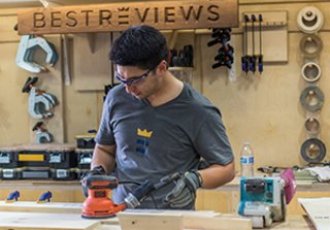We recommend these products based on an intensive research process that's designed to cut through the noise and find the top products in this space. Guided by experts, we spend hours looking into the factors that matter, to bring you these selections.

Wrenches are great, but there are plenty of places they can't reach. A socket set is indispensable around the home, garage, and workshop. Combined with a turning tool like a ratchet or wrench, you can use a socket to loosen or tighten the nuts and bolts in the vehicle you’re working on.
Choosing the right socket set can be confusing. The number of pieces in the set, the material with which they’re made, and sizes of the sockets all impact your decision.

There are four main features to think about when you’re looking to buy a socket set.
Socket material
Socket type
Drive size
Set contents
Sockets are subject to extreme forces, so they need to be able to handle a lot of punishment. Ordinary carbon steel isn't up to the task. The vast majority of sockets are made from either a chrome vanadium (CVS) steel alloy or a chrome molybdenum (cro-mo or chrome moly) steel alloy. The best sockets are forged – shaped by hammering – or formed in a mold under great pressure. This adds ductile strength, or resistance to breakage.
Chrome
Increases hardness
Doesn't rust
Vanadium
Is used in most socket sets
Adds toughness
Can be brittle, leading to cracking in cheap sockets
Molybdenum
Adds toughness
Offers superior strength and durability
Costs more
Budget socket sets sometimes use steel for the bit (the part that goes in the ratchet handle) and CVS for the socket. These sets are great to those who want sockets for occasional use, but they aren’t the choice of professionals.
Most people recognize a standard hex socket. Some sets have 12-point versions. There’s little practical difference, though the latter are marginally faster to fit. Both come in several different lengths, referred to as "shallow," "standard," or "deep," though the dimensions vary.
There are other, more specialized types of sockets which might suit your needs better.
Flex sockets: The joint in the middle allows you to reach into awkward spaces.
Pass-through sockets: These sockets have no top, so they can be used on long bolts, where the nut is set further down. A ratchet handle with a corresponding hole is required.
Insulated sockets: A special coating makes these sockets safe to use with live AC or DC current.
Impact sockets: These particularly tough sockets are designed to work with electrical or air-powered impact drivers.
Many spark plugs require special longer sockets. Some, but not all, general-purpose sets include these sockets.
Small, cheap DIY socket sets often have a one-quarter-inch drive. There's nothing wrong with that, but larger drives give you more mating surface between the drive and socket, allowing you to transmit more power. Three-eighths-inch drives are the next step up, and one-half-inch drives are the largest in common use. The latter are the professional standard, often found on high-quality impact sockets that can withstand extreme forces. It's common for larger, general-purpose socket sets to offer a choice of drives.
Drive adapters are also available. If you only have a one-half-inch drive, for example, you can get adapters that will allow you to use three-eighths-inch or one-quarter-inch drives. Stop-down (reduction) adapters are okay. You should avoid step-up adapters because a one-quarter-inch ratchet probably doesn’t have sufficient leverage for use on one-half-inch sockets.
When it comes to the contents of your socket set, the choice is enormous. Sets aimed at professionals often only contain sockets. Others of this standard might include the following.
Various extension bars
Universal joint (adapter for using sockets at an angle)
Breaker bar (longer handle, without a ratchet, designed for extra leverage)
General-purpose socket sets might have some or all of the above, as well as the following.
One or more pear ratchet handles with different drive sizes ("pear" describes the shape)
Screwdriver-type handle; interchangeable screwdriver bits
Allen keys
Combination wrenches
The number of sockets in a set also varies. Specialist sets might have as few as eight or ten, while others might have 40 or 50, giving you almost endless choices. Big sets offering hundreds of components can be tempting, but it's more important to focus on quality and getting the pieces you really need rather than extras that would probably never leave the case.

Q. What does SAE mean on a socket set description?
A. SAE stands for the Society of Automotive Engineers. The set will be imperial (inches) rather than metric.
Q. Some socket sets have a chrome finish and some are black. What's the difference?
A. It's just the final coating. Some people like shiny and others think black is more professional looking. What's important is the material the socket is made of, as discussed above.
Q. Should I look for ANSI on socket sets? Is it important?
A. Tools certified by the American National Standards Institute (ANSI) have to meet certain criteria, which sounds great, but some professionals suggest that ANSI requirements aren't particularly stringent. The certification didn't impact their buying decisions.
Get emails you’ll love.
Learn about the products you’re wondering if you should buy and get advice on using your latest purchases.
